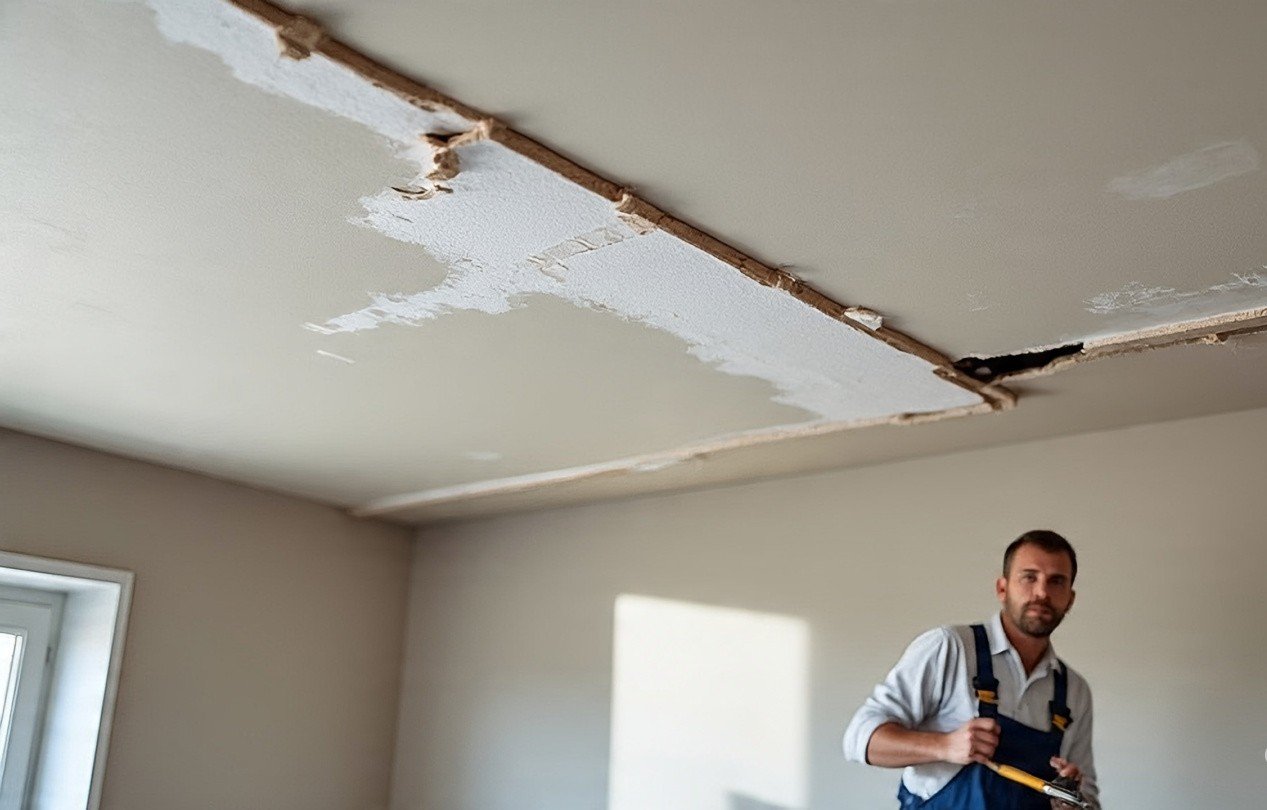If you’ve ever looked up and spotted a mysterious stain creeping across your ceiling, you’re definitely not alone. Many folks in Arverne have faced the sudden surprise of an unexpected drip or a growing patch overhead. It’s the kind of home problem that sneaks up on you, often showing itself long after the real trouble has begun. Let’s walk through some of the most common spots where ceiling water damage starts in our local homes—and what you can do before things get out of hand.
1. The Usual Suspects: Roofs and Attic Spaces
Most of the time, the first sign of water trouble comes from above—literally. In Arverne, where salty breezes and stormy weather are just part of life, our roofs take a beating. Shingles loosen, flashing peels back, or sometimes a fallen branch punches a hole where rain can slip right in. Once moisture seeps beneath your roof, it can travel along beams and insulation, showing up as a brownish stain on your ceiling days or even weeks later. If you have an attic, keep in mind that slow leaks might soak insulation before you ever notice a thing. Regularly peeking at your attic after heavy rainfall can save you a big headache down the line.
2. Upstairs Plumbing: Hidden Leaks and Drips
If your home has a second floor or even just an upstairs bathroom, keep an eye out—pipes and fixtures are notorious for sneaky leaks. A tiny drip from a loose pipe joint or an overflowing tub can trickle down between floors, eventually making its way to your ceiling. The tricky part is, water doesn’t always fall straight down. It can travel along joists and show up far from where the leak started. So, if you see a suspicious spot on the ceiling under a bathroom or laundry area, don’t ignore it. That little stain could be your early warning before things get messy (and expensive).
3. Windows, Walls, and the Weather Factor
Sometimes, the problem isn’t over your head—it’s sneaking in from the sides. Windows that aren’t sealed properly or cracks in the exterior walls can let rainwater creep in. In Arverne, wind-driven rain has a way of finding every tiny gap. Over time, that moisture can work its way up or down to your ceiling. If you notice bubbling paint, peeling wallpaper, or a musty smell near windows or upper walls, water is likely making itself at home where it shouldn’t be.
4. Quick Reference: Where Water Damage Often Begins
| Common Source | Early Warning Sign | What To Check |
|---|---|---|
| Roof/Attic | Brown stains, sagging drywall | Shingles, attic insulation, roof flashing |
| Bathroom/Kitchen Pipes | Wet patches, mold, musty odor | Pipes under sinks, around tubs and toilets |
| Windows & Walls | Peeling paint, wall stains | Window seals, wall cracks, caulking |
| Appliances Upstairs | Ceiling drips, soft spots | Washer, dishwasher, HVAC lines |
5. Staying Safe and What It Might Cost
Dealing with water damage isn’t just about keeping your house looking nice. Damp ceilings can hide mold, which is tough on your lungs and can trigger allergies or breathing problems. If you spot a big wet patch or notice the ceiling starting to bulge, stay clear—wet drywall can fall without warning. Safety first: turn off the electricity in the area if there’s any chance water could reach wires or fixtures.
Now, let’s talk money. The price tag for ceiling water damage can vary a lot. Catching a small leak early might mean a quick repair, but ignoring the problem can lead to replacing entire sections of ceiling, insulation, and even structural repairs. Mold removal, in particular, can get pricey if it’s been growing unseen for a while. If you’re ever in doubt, it’s worth calling a local pro for a quick check—they’ll often spot things we can easily miss.
“Sometimes the smallest drip, left unchecked, can become the biggest headache in your home.”
6. When You Need Emergency Service
Water doesn’t wait for a convenient time to cause trouble. If you suddenly see water pouring from your ceiling, or if a storm rips part of your roof away, that’s when you need help fast. Many Arverne restoration companies offer 24/7 emergency service—they’ll bring the gear and know-how to stop the leak, dry things out, and keep further damage at bay. The faster you act, the less you’ll have to fix later.
Wrapping Up: Keep an Eye Out and Act Fast
Water damage on the ceiling can feel overwhelming, but staying alert to the most common trouble spots makes a huge difference. Whether it starts above your head in the attic, under a bathroom, or from a leaky window, quick action is your best friend. Protect your home, your health, and your wallet by watching for those early signs and calling in the pros when things look serious. That way, you can keep your Arverne home dry and comfortable, no matter what the weather sends your way.
Read More: Arverne Water Damage Restoration

